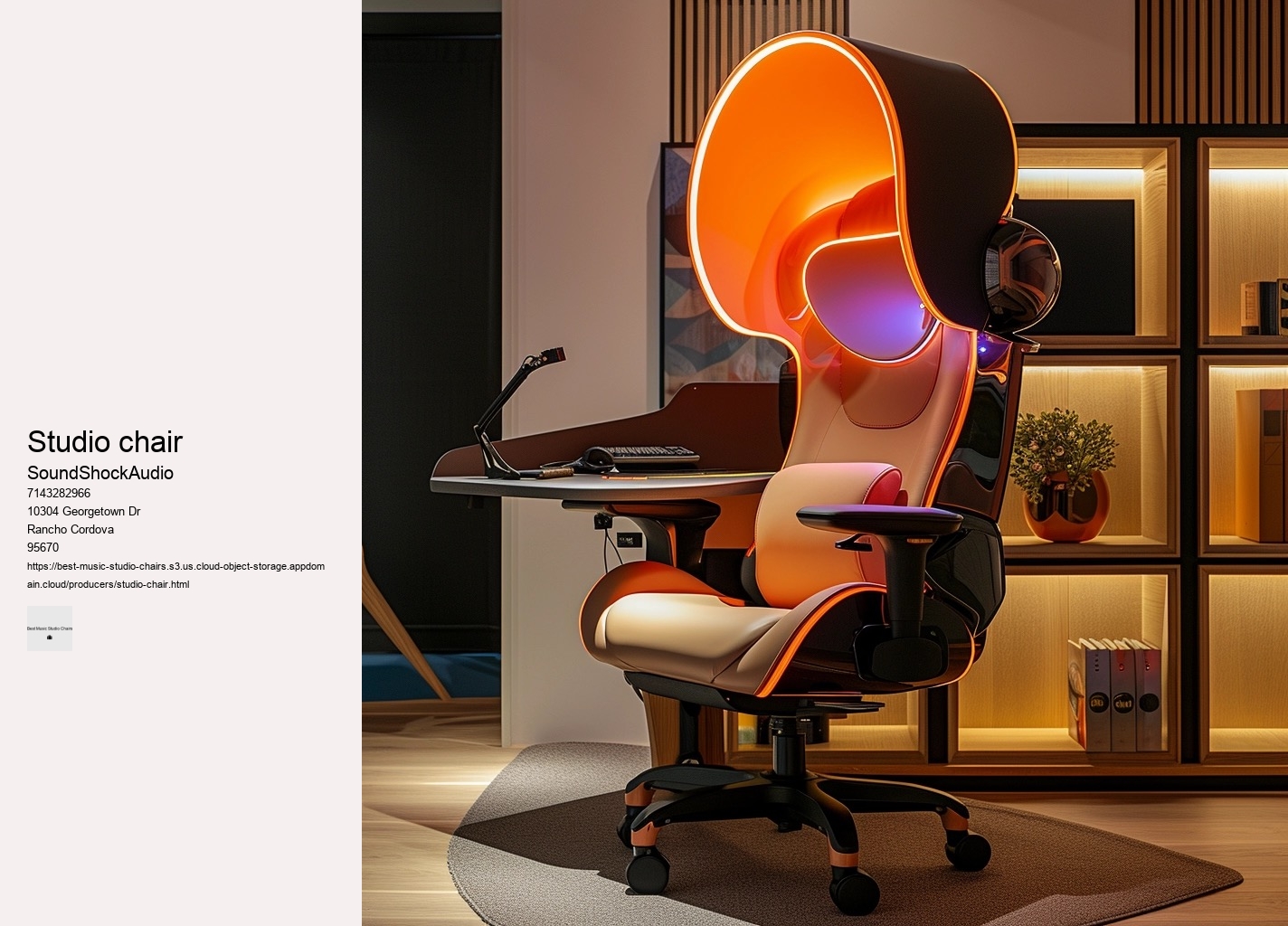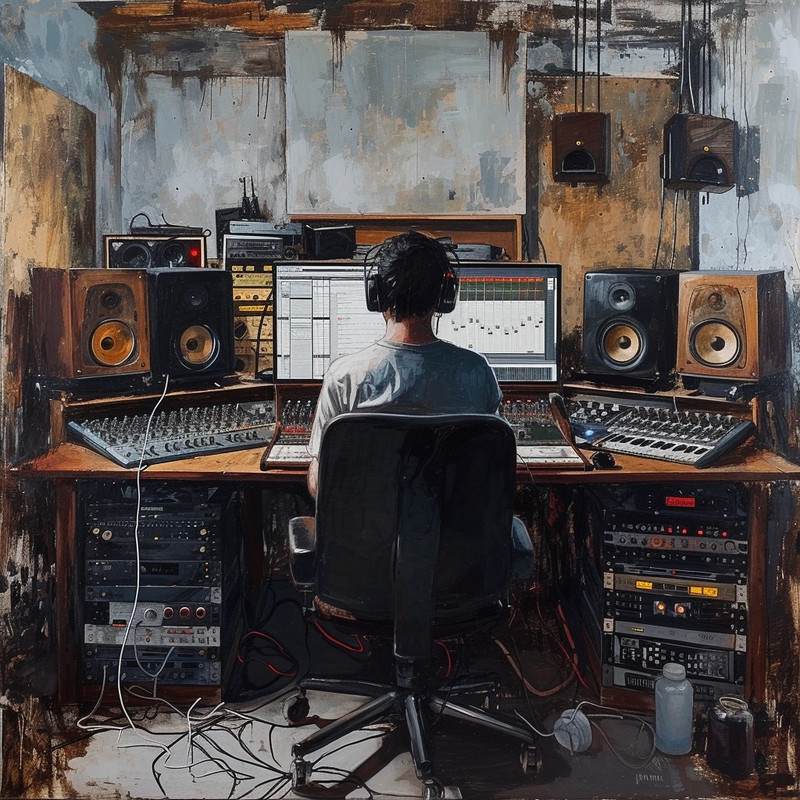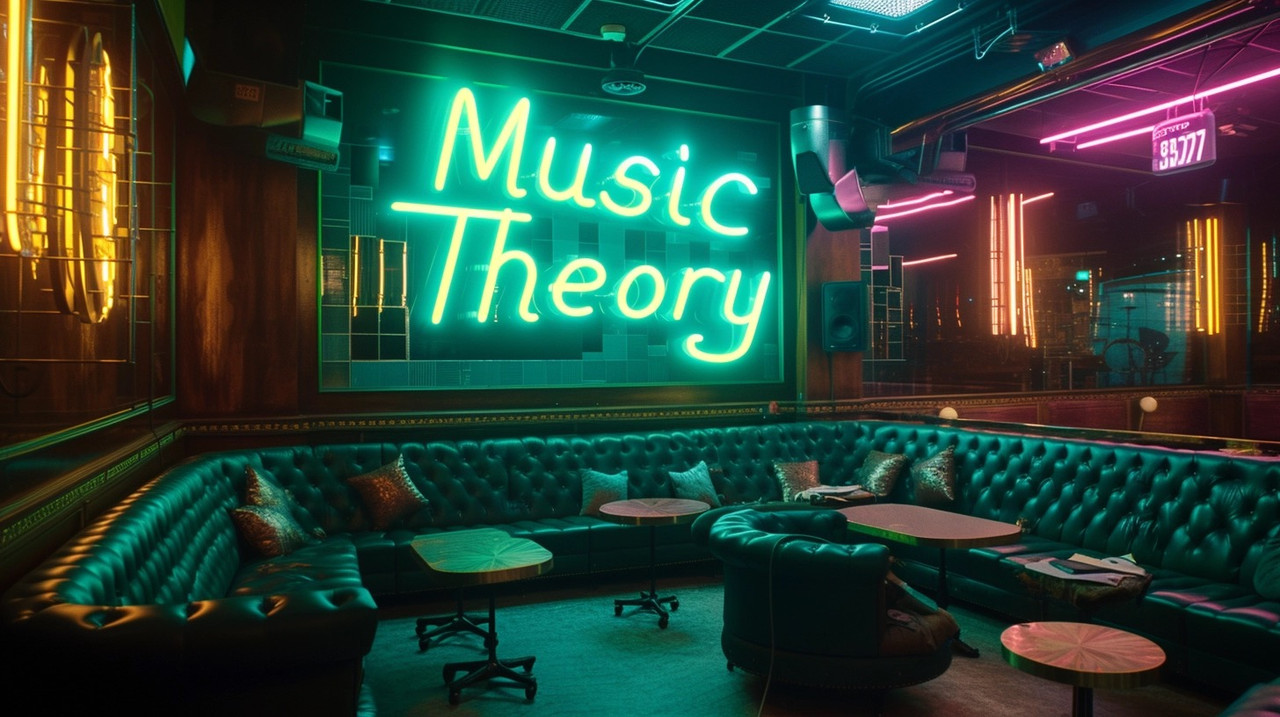

Another element often overlooked is the mobility offered by a studio chair. Music production often involves dynamic body movements—reaching for that high note on a keyboard or pivoting swiftly from one piece of gear to another—and your chair must withstand constant use without losing its form or function. Moreover, time equals money in any production environment - be it music, video editing, or graphic design - and efficiency is king.
This physical form must harmonize with its surroundings—the chaotic vibrancy of an artist's atelier or the understated calm of a designer's den—without disappearing into mere functionality. Balance cost against features; investing in a quality chair can save you from future back concertos (the painful kind) down the road.
Each cushion whispers secrets of cloud-like serenity to weary backs bent over mixing consoles. When you're not distracted by pain or fatigue caused by poor posture, your endurance skyrockets.
By prioritizing ergonomics, you encourage a healthier sitting position that allows for better blood flow and reduced muscle tension. Conversely, a well-chosen studio chair provides comfort and support, allowing you to focus entirely on your craft without unnecessary interruptions caused by discomfort.
Prioritizing ergonomics and comfort ensures that you can endure those marathon sessions without sacrificing your physical or mental well-being — allowing creativity to flow unhindered by bodily distractions. This position reduces pressure on the lower back and aids circulation. Moreover, taking short but frequent breaks from sitting can help reset one’s posture and reduce the likelihood of fatigue.
Top-tier studio chairs are engineered utilizing robust materials such as reinforced aluminum frames and resilient mesh or leather upholstery. Consider also mobility; a chair with smooth-rolling casters will let you glide effortlessly from one end of your workspace to another—a tangible metaphor for seamless thought transitions from concept to execution.
Fourthly, durability is crucial since studio chairs are used extensively. Ultimately, aesthetics hold peculiar significance; after all, this chair sits at the heart of creativity's temple—the studio—and its design must inspire.
However, practicality reigns supreme in reality. When discomfort is absent from our seating experience, we can immerse ourselves fully in creative tasks without distraction — an invaluable benefit for anyone dedicated to their craft.
When embarking on this journey, comfort reigns supreme. When hours stretch into marathons of focused work, a reliable studio chair is not merely furniture; it transforms into a steadfast companion. Therefore, it becomes imperative for musicians to find seating that resonates with their body's needs as much as they resonate with their music.
In conclusion, while there might not be a universally acclaimed 'top-rated' chair due to individual preferences and needs varying greatly amongst musicians, chairs that prioritize ergonomics and posture like the Harmony ErgoTune Supreme are highly regarded in musical circles. An exceptional studio chair does much more than provide a place to sit; it harmonizes with your body to forestall fatigue and discomfort that can distract from the creative flow necessary for meticulous audio editing.


Unveiling this paragon of comfort, we encounter a masterpiece that seamlessly integrates aesthetic appeal with practical features. Materials play a significant role in this balancing act. Enter dynamic ergonomics: this innovative concept refers to chairs that adapt in real-time to the user's body. Ultimately, the choice between economy versus luxury comes down to balancing short-term savings against potential long-term gains in healthful ease and professional output. The chair you select for endless hours in the studio is not merely a seat; it becomes your command center, a throne from which you orchestrate audio masterpieces.
This evolution symbolizes a broader shift towards recognizing the importance of human-centric design—not merely as an afterthought but as a fundamental consideration shaping how tools enhance our abilities rather than impose limitations upon them. Once upon a twilight hue, artisans of rhythm embarked on quests for perfect perches. This decision is not merely about comfort; it also encompasses health considerations and productivity implications. This exploration reveals the best studio chairs, ensuring your experience is unmatched in support and ease throughout editing or any task requiring prolonged sitting.
Firstly, ergonomics play a pivotal role. This increases efficiency as you reach for different pieces of equipment or instruments during your session. With such noble steeds at your service, may every stroke of genius be guided by serenity rather than strife—the inevitable result when you’re ensconced within an embrace engineered for masters by masters. Chairs without this fundamental adjustment could lead to discomfort and health issues over time.
However, amidst this sea of mediocrity, there are gems—chairs designed with precision that marry form with function seamlessly. However, incorporating this functionality without compromising on style requires an innovative approach—melding practicality with elegance. Its innovative backrest aligns seamlessly with the spine's natural curve, promoting an upright position without strain. Yet delve deeper into its design elements, and you'll find that each curve, texture, and material choice speaks volumes about the ethos it carries.
Ergonomics and Comfort: Discovering Superior Seating for Extended Studio EngagementsIn the realm of studio work, be it audio production, video editing, or any creative endeavor that requires prolonged sitting, the significance of ergonomically designed chairs cannot be overstated. Whichever camp you fall into, remember that breathability remains essential; materials like mesh allow air circulation which prevents overheating during marathon sessions. Choose a chair with adjustable features—think lumbar support that defies gravity or armrests that refuse conformity—allowing you to orchestrate your ideal sitting posture.
Seat depth is another critical factor often overlooked in the pursuit of comfort. Fabrics that breathe are essential; they allow air circulation, wicking away perspiration and keeping you cool under pressure.
It's less about grandeur or aesthetics and more about ergonomics and personal well-being. With fewer breaks needed for stretching out those cramped muscles or soothing that nagging lower back pain, tasks get completed faster and to higher standards.
The industry's leading seats undergo extensive trials where they are pummeled with weights and exposed to conditions mimicking decadal wear within mere days. The task involves discussing a revolutionary studio chair that has transformed the comfort of music production, but with a twist in the language usage that might lead to a somewhat nonsensical or abstract composition.

In conclusion, acknowledging the profound impact that proper seating has on preventing fatigue and injury is paramount for maintaining overall well-being. Their chairs are silent partners in this symphony of skill, providing a foundation upon which their artistry can flourish. These adjustments allow you to maintain a healthy posture, reducing strain on your back, neck, and shoulders.
This will create a quirky and unusual text that maintains the essence of the topic but with a twist.---When we delve into the realm of studio furniture, particularly chairs designed for music producers, durability stands as a paramount attribute. Spending hours on end in a studio requires a seat that offers unparalleled comfort and support to prevent fatigue and keep you focused on your craft.
Such knowledge empowers individuals with strategies for self-care which ultimately leads to healthier lifestyles both inside and outside the workplace. While such chairs command a premium price tag, they represent an investment in one's health and efficiency.
Lastly, don't underestimate personal preference's role—testing different chairs until you find 'the one' is crucial since everyone's definition of comfort varies widely. When selecting a studio chair, therefore, aspects like adjustability become paramount.
The silhouette of a studio chair also communicates much about its character: whether it's minimalist lines that echo modernist sensibilities or more ornate structures that nod to classical influences. This means no more fidgeting to find a comfortable position or standing up every half hour to shake off stiffness. Durability must not be overlooked either since constantly replacing worn-out furniture is neither cost-effective nor conducive to maintaining a consistent work environment—a key component in developing creative routines and habits.
When contemplating the acquisition of a chair for music production pursuits, individuals are often confronted with a dichotomy: should one opt for budget-friendly seating solutions or invest in high-end furniture?
Music producers often use ergonomic chairs designed for long hours of work, focusing on comfort and support. Popular choices include the Herman Miller Aeron and the Steelcase Leap, which offer adjustable features to fit a wide range of body types and preferences. These chairs help in maintaining good posture and reducing fatigue during extended studio sessions.
The best chair for long sitting hours is one that offers ergonomic support, such as an adjustable office chair with lumbar support, a comfortable seat cushion, and adjustable armrests and height. Chairs designed for ergonomics help in maintaining proper posture, reducing back pain, and enhancing comfort during extended periods of sitting. Brands like Herman Miller and Steelcase are renowned for their high-quality ergonomic office chairs that cater to these needs.
To choose an office chair for long hours, prioritize features that support ergonomics and comfort, such as adjustable lumbar support, seat height, armrests, and a reclining backrest. Look for chairs with breathable, durable materials to ensure comfort over extended use. It's also beneficial to select a chair with a good warranty, indicating the manufacturer's confidence in its durability and long-term use. Reading reviews from other long-hour users can also provide valuable insights into a chair's real-world performance.
EDM, or Electronic Dance Music, may seem to be losing popularity due to a few factors. One reason is the saturation of the market; with so many artists and tracks being released, it's harder for new music to stand out. Additionally, musical tastes and trends are constantly evolving, leading audiences to explore other genres. However, it's important to note that while its mainstream visibility may fluctuate, EDM still maintains a strong and dedicated fan base in various subgenres and underground scenes.